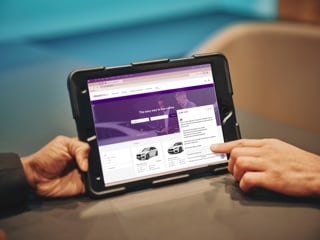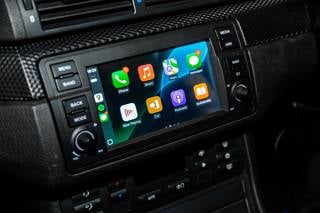By Jay Nagley
In the 1960s, it was a truism of the car industry that safety did not sell – drivers felt themselves far too skilled to be in any danger of having an accident.
In the 1970s and 1980s, Volvo – and to a lesser extent Saab – showed that you could indeed sell safety. During the 1990s, safety shot up the car-buyer’s agenda, and a poor crash test result became as dangerous for the car as for its occupants.
 |
||
Jay Nagley was a market analyst at Porsche Cars GB before spending the past 13 years as the head of Redspy
|
||
In 1997, the one-star occupant safety rating for the Rover 100 was the final nail in its coffin, while the Landwind (basically a Chinese Vauxhall Frontera) had to be withdrawn from Europe in 2005 after a catastrophic German test showed that a driver would probably not survive a crash at 40mph, meaning a no-star safety rating.
Buyers tend to think of all cars as safe
Today, the problem is the opposite. Most cars have an excellent Euro NCAP safety rating, so buyers tend to think of all cars as safe. As long as they have ESP, enough airbags to turn the interior into a bouncy castle and the latest generation of ABS, all modern cars seem pretty impregnable. So could, for example, Volvo ever again differentiate itself with safety?
One problem is that you can’t get more than a five-star Euro NCAP rating, so one five-star model does not appear better than another.
But are we looking at the wrong numbers? Every year, the Swedish insurance company Folksam produces a report on the likelihood of injury when a driver or passenger is involved in a crash. It has been studying the safety performance of all models for many years, and has a database of 158,000 accidents going back two decades. The latest report finds that current Volvo models are 60% safer than the average car. That is a huge margin, and seems surprising in this age of Euro NCAP tests.
It is no coincidence that Volvo has not historically been a big fan of Euro NCAP. In 2005, a spokesman said: “Euro NCAP is a very narrow measure of a car’s accident performance. Some manufacturers who sell only in Europe will engineer their cars specifically just to pass those tests. It’s too simplistic.”
Volvo thinks it knows more about accidents than almost anyone else, having studied thousands of them in Sweden over the past 40 years.
However, the public only has the time and patience to know one thing about safety, and the Euro NCAP rating is that one fact. To be fair to Euro NCAP, it has definitely made a big difference to car safety by creating an arms race among car manufacturers to improve the safety of their cars. Ten years ago, it was possible to buy a family car without ABS or a passenger airbag, a situation that would be completely unthinkable today.
There are two issues with crash tests. Firstly, they are only a simulation of what happens in real life. To be objective and repeatable, the tests have to be defined exactly, so the car manufacturers understand exactly what is going on. However, just like a school that is more interested in getting students to pass exams than in giving them a rounded education, engineers can design a car to perform very well in the specific Euro NCAP tests.
Of course, a car that gets a top score in the test will probably do pretty well in all accidents, but it will not necessarily be the best. Only by looking at real-life accident data can you be sure that any particular car really is as safe as it is possible to be.
Automatic braking proven to cut accidents by up to 27%
Secondly, any crash test finds it hard to measure the value of active safety systems. For example, US insurance data has recently shown that automatic braking reduces accident rates by 10-15%. A Swedish study put the figure even higher – up to 27%.
Euro NCAP can mark down a car that does not have a generally available feature (for example, the deeply irritating seatbelt warning buzzer), but automatic braking is not yet common enough for Euro NCAP to penalise cars without it – that will only happen from 2014. Euro NCAP’s position is entirely logical, but it does not change the fact that a car made in 2012 or 2013 with automatic braking is a lot safer than a car without it.
Euro NCAP has the benefit of being simple to understand and easily memorised. Any car company that wanted to stand out for safety would have to persuade the public to look at a completely new set of data.
Distilling the messy real-world data of deeply unpleasant real-world accidents into a simple rating would be quite a challenge. Nevertheless, it is a worthwhile one – knowing what happens in reality is always preferable to knowing what happens in theory.


















Login to comment
Comments
No comments have been made yet.